TEXT BY SAHIL GERA AND NAVDHA MALHOTRA
PHOTOGRAPHS BY SAHIL GERA
Jaipur, Rajasthan, India
In 2023, my grandmother placed this fragile, palm-sized wedding card in my hands, as if inviting me back to the day it was first given out sixty years earlier. Dated June 5th, 1963, it still carries the soft fraying of age, a faint scent of paper stored carefully in an almirah, and the quiet pride with which she had kept it alongside her pearls for decades. She could not have known then, at nineteen years, reticent and hoping to study further, that this single sheet of paper would outlive so many chapters of her life. After her passing this August, I now hold it with the same care she once did. Whenever I look at it, I hear her voice again…

“Preetam, tera rishta kar aaye hain…Leela ke bhai ke saath...Preetam, we’ve finalised your engagement with Leela’s brother”, said Dadi’s sister-in-law. “Oh, what to tell you… I just cried and shouted, and asked Bibi, ‘Mere liye roti nahi thi kya ghar mein?’ Didn’t we have enough food at home to feed me?” Dadi told me, gesturing animatedly as she relived the moment.
“I used to play at Leela’s home and eat ber (jujube) from their tree,” she continued. “Then one day, I heard whispers and sensed something fishy, not knowing it was about me.” Mothers, she said with a blush, never directly told their daughters about their engagement. “I wanted to study. I was already enrolled in Maharani College, with Civics and Child Psychology as my subjects. It wasn’t the right decision, mujhe padhne nahi diya (they didn’t let me continue my studies),” she said grudgingly. “But they had their own responsibilities to fulfil, so I understood,” she added, almost consoling herself, when I asked how she felt about being married off at nineteen.


This wedding invitation was among the first in her community to be printed in English. That is ironic since it was not the daily language of the masses that time. It was more of a status symbol, a quiet way of signalling that the family was “literate.” Its floral motif on the top-left corner and font still shine, despite the pale, chai-stained paper that has aged with time.
What stands out is the absence of women’s names. Dadi’s mother appears only as Shrimati Ram Chand Chandna – identified through her husband. People often say “those were different times,” but every moment is a chance to choose differently. A single act, even if it feels radical or awkward, can set a precedent. So it becomes a question of choice and of who actually has the power to make a choice? This palm-sized card then becomes more than an invitation- it is a reflection of Indian society at that time, its hierarchies and power dynamics and the silences between the lines. Dadi preserved it alongside the first photograph of her and Dadu after their wedding.
*
The address on the card reads Frontier Colony – home to families who had to flee from the North-West Frontier Province (now Khyber Pakhtunkhwa, Pakistan) during the Partition. Like thousands who crossed the border and rebuilt from nothing, my grandparents’ story runs parallel to each others. After Partition, my grandfather’s family settled in Jaipur and opened a small general store. Lalaji, my great-grandfather, often said that my dadu, Punnu, was their ‘lucky charm’ and customers always came when he stood behind the counter. Yet, luck had little to do with it; survival depended on labour, persistence, and quiet rebellion.
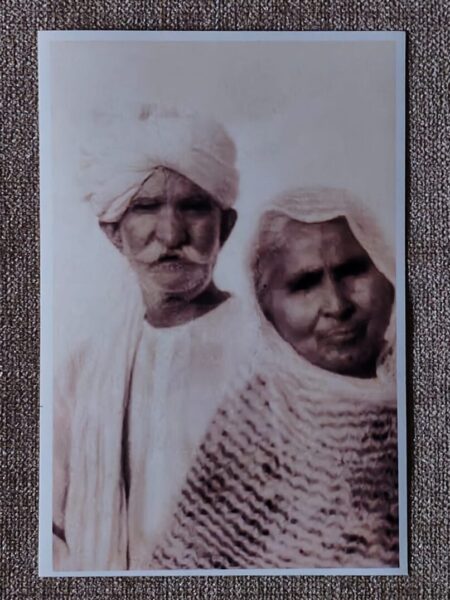

Punnu and his brothers sold balloons on the streets, did odd jobs, and watched their mother barter her jewellery so they could study. Years later, when government job forms opened, his elder brother urged him to apply – a chance to step beyond the narrow lane of their store. Lalaji resisted, afraid of losing a helping hand, but Dadu filled the form in secret. He joined the Telecom Department, trained in Agra, and eventually retired as Assistant Director at BSNL in 1996. His journey from selling balloons to holding a government post mirrored that of a generation shaped by Partition: children forced to grow up too soon, wrestling with hunger, dignity, and dreams deferred. His name, Punnu, came from the tragic folktale of Sassi-Punnu, a story of devotion and endurance. Ironically, life demanded both from him in abundance.
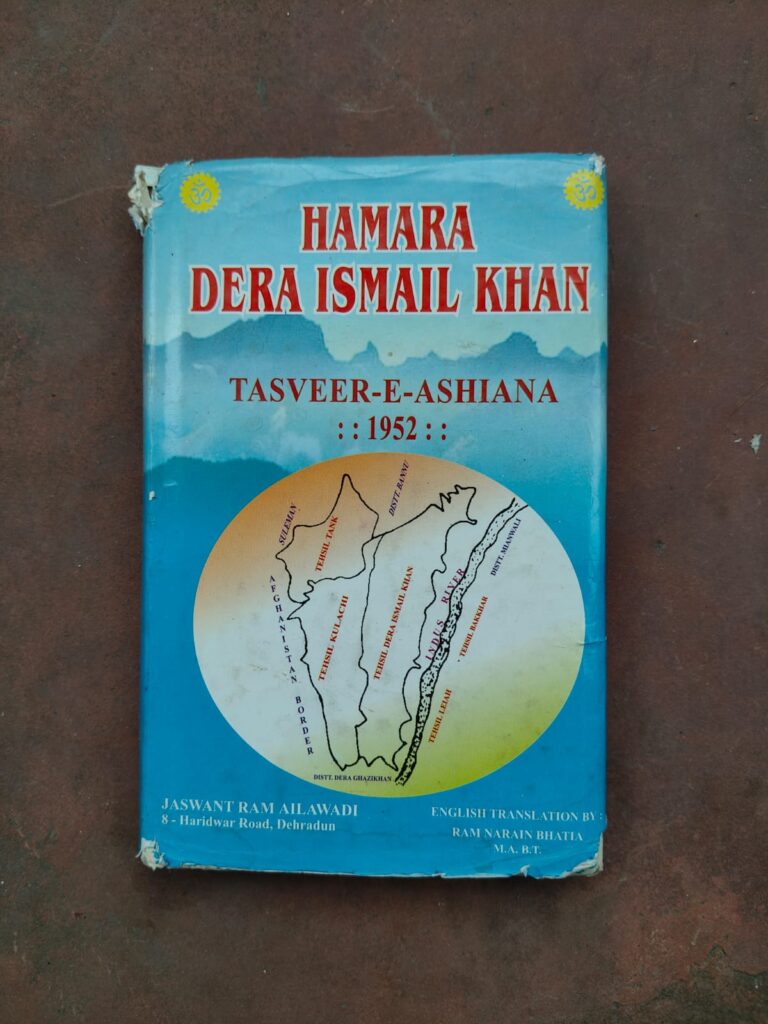

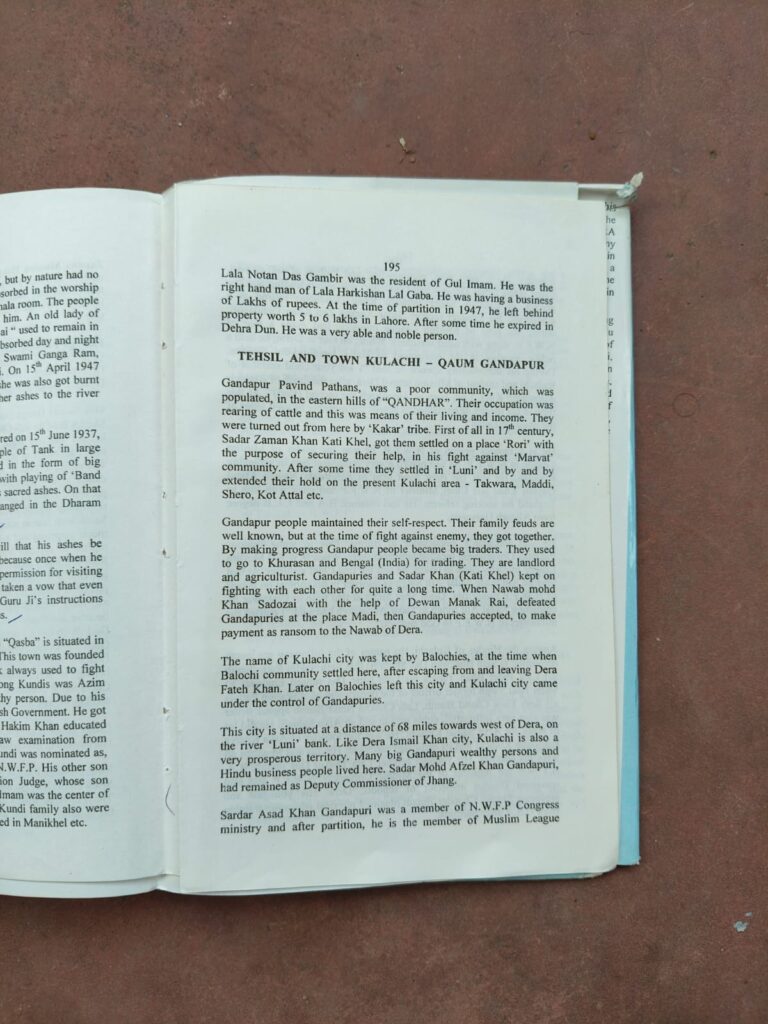
My grandmother’s family also had to flee from their home in Kulachi, now in the D.I. Khan division of Khyber Pakhtunkhwa in Pakistan. Leaving behind a comfortable life, her parents rebuilt from scraps in India, first in Bikaner and later in Jaipur. Her father, Ram Chand Chandna, was deeply shaken by what he had to do to keep the family afloat: buying loose yarn to roll into tiny balls for a few paise, filling nail polish into bottles, anything that allowed his children to sleep with full stomachs. “Sab tabaah ho gaya tha – everything was destroyed,” Dadi said.
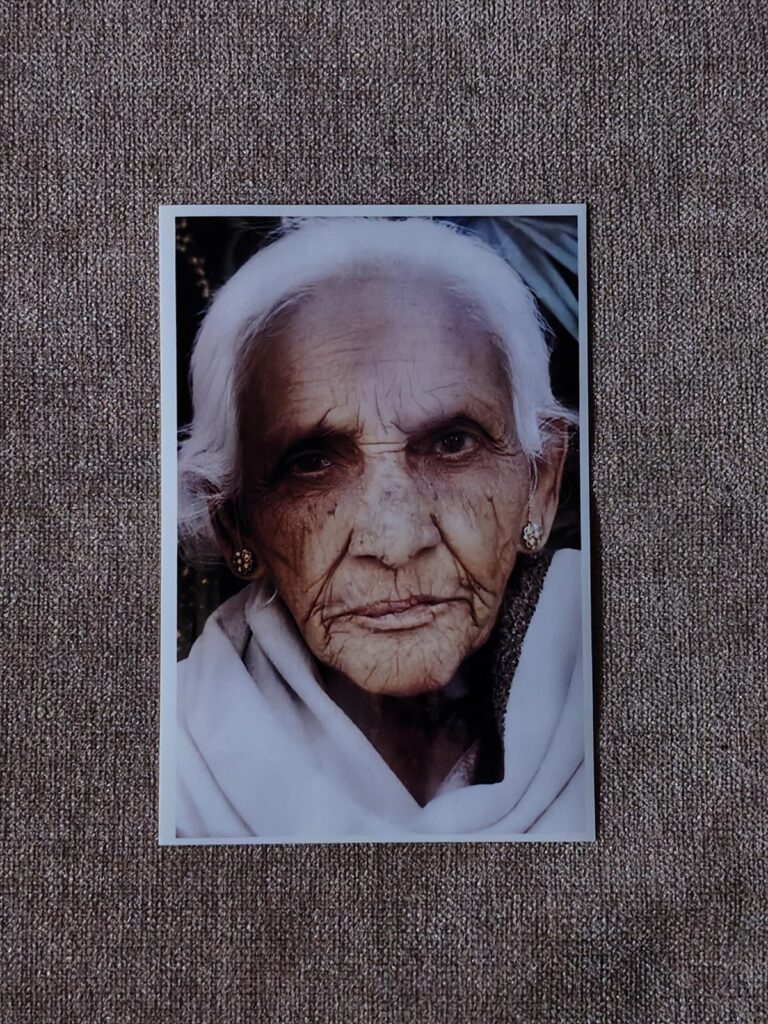
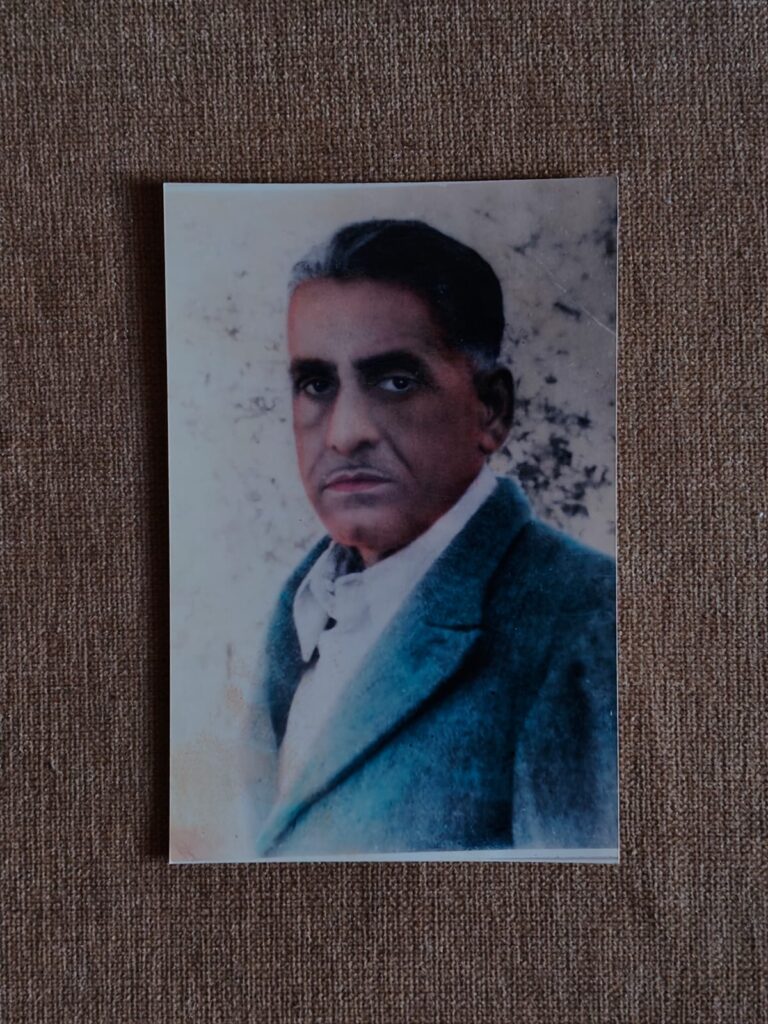
“When we first reached Bikaner,” she recalled, “we stepped into a dilapidated house that had belonged to a Muslim family who had fled. There was a jhoola (swing) in the courtyard and a tea set left behind.” Dadi eventually carried that tea set with her when she got married. “It is to remember the ones who unknowingly sheltered us,” she said. She never recalled exactly where that house stood, she had been too young to hold the geography in her mind. When I look closely at the tea set today, it’s details tell their own story.


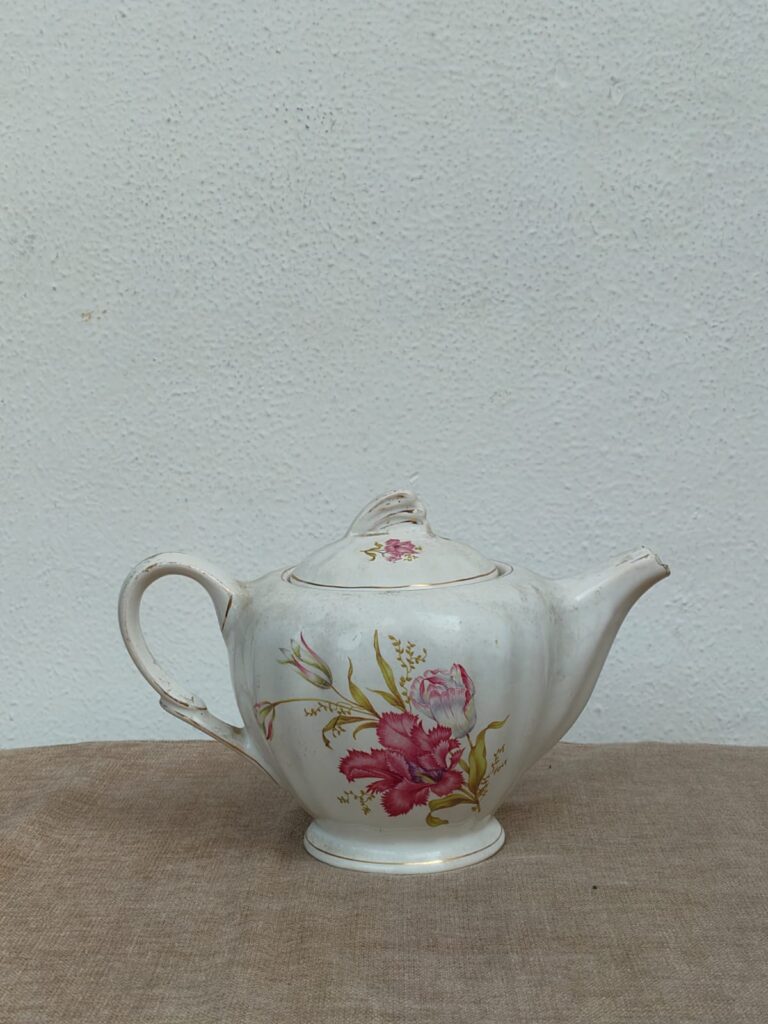
The flowers were applied using an old transfer-print technique, giving them a soft, brushed look with a thin line of gold along the rim. The glaze has begun to crackle, those fine lines that appear only with age, and the chipped spout shows it was a set that was used, not kept aside. The rounded teapot, its slightly fluted lid, and the two-handled sugar pot reflect the cottage-style designs common in mid-century Indian porcelain. Over the years, one of the original cups broke and she replaced it with another that carried a similar floral pattern, almost matching, but not quite. This replacement cup is stamped “Crown Ceramics,” a company that came much later, around the 1980s. Apart from the replacement cup, every other piece carries the same faint blue stamp “J.P. & Sons / Manufacturers of China / Made in India / 120.” I couldn’t find anything about this company online.

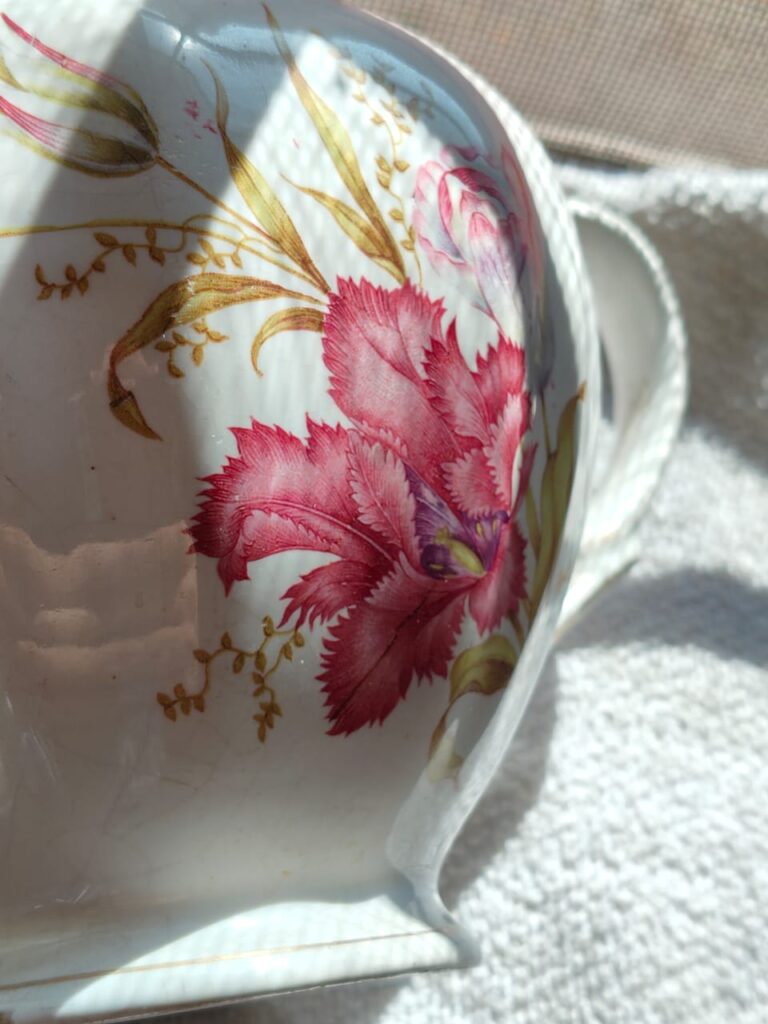

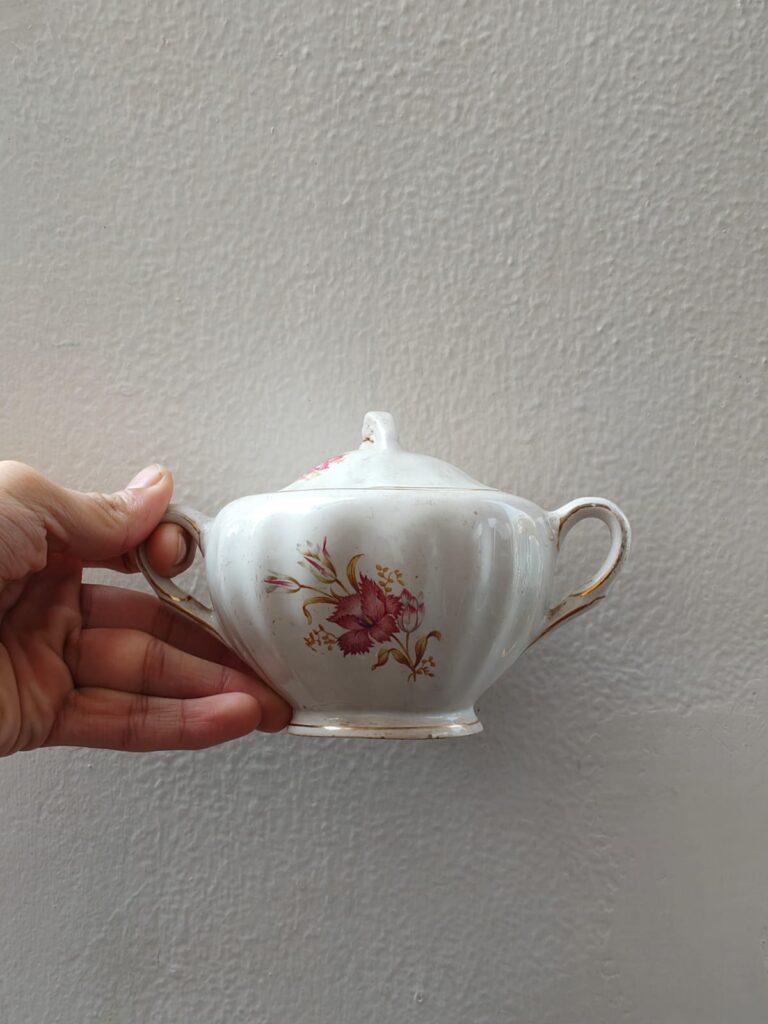

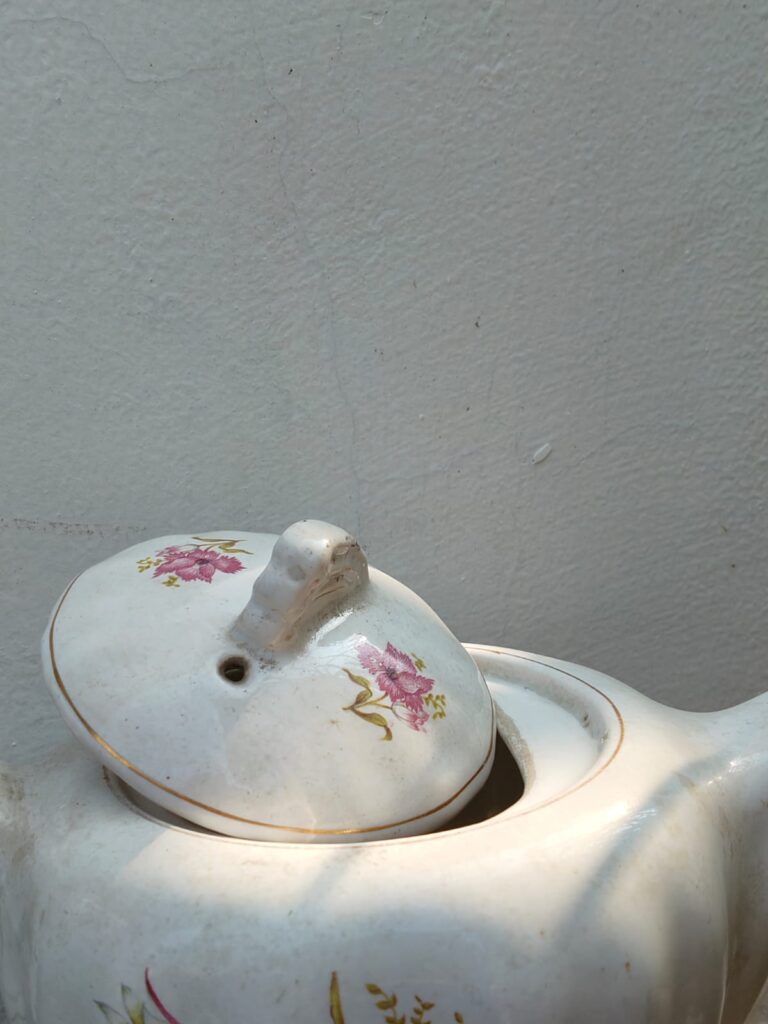
Along with the tea set, Dadi also carried a ceramic dinner set to her new home after marriage. From the full set, only one dinner plate and one rice plate survive today. Their bases are stamped BENGAL POTTERIES / MADE IN INDIA / 3-63, marking the maker, the origin, and the month and year of manufacture. These two surviving sets now sit apart from the everyday crockery, high on the top shelf, as if watching over the other utensils.
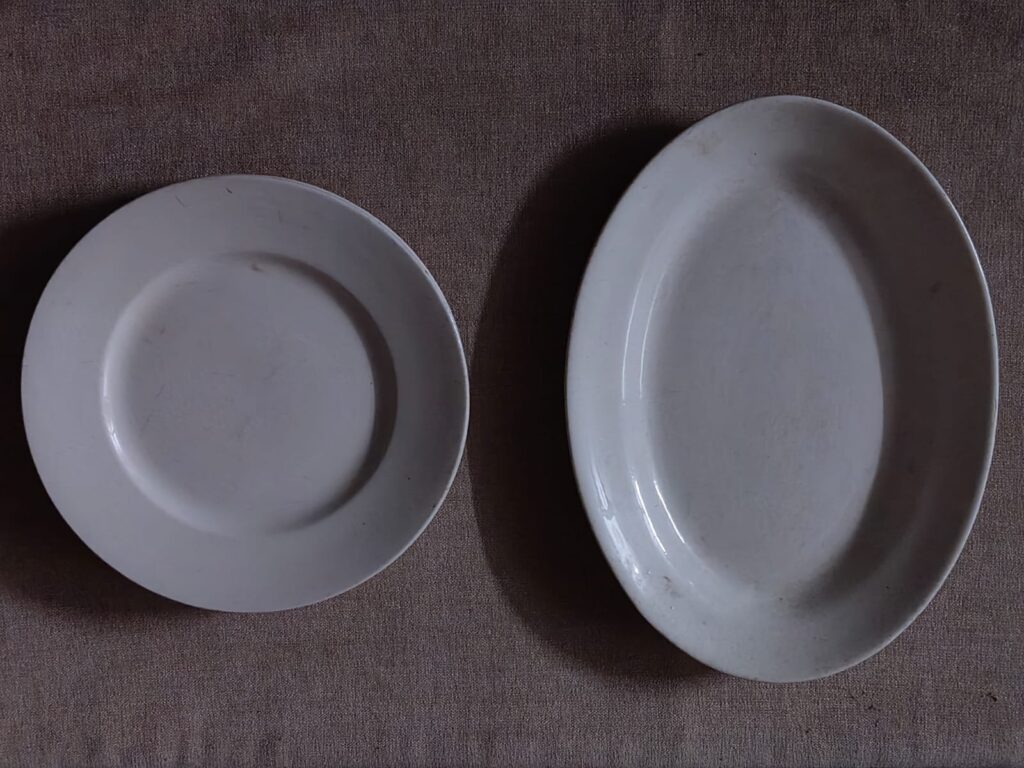
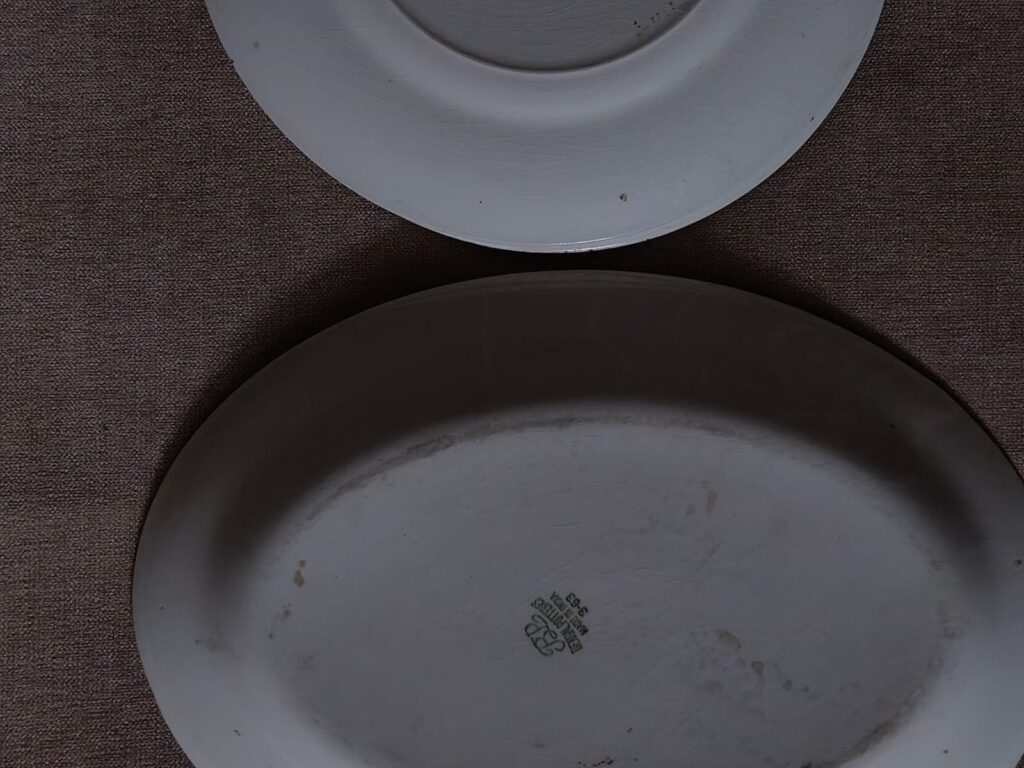
The Partition was not a single day in mid-August 1947. It kept shattering lives long after. People were forced to leave their soil and begin again on land they were suddenly expected to call “home.” The problems did not stop at the border; they simply changed shape- into a permanent longing, an unending search for home.
When I once asked my grandmother about the 1971 Indo-Pak war, I realised that she held two homes in her heart. During that war, she spent fourteen sleepless nights with the wives and children of government officials, their husbands all on emergency duty. They huddled together in one officer’s home, “as if in a bunker,” she recalled. Explosions lit up the sky; they called it a “light show,” sarcasm masking their fear. Even in that moment of anxiety, another worry lay beneath, that of the home she had had to abandon. She wondered how her small town of Kulachi, across the border, was living through the same war.
*
“I planned our first interaction. She had no idea,” my grandfather told me with a timid yet triumphant laugh. “I deliberately mixed a few kankars (grit) in the flour, expecting her to protest. And it happened!” he clapped, reliving the fifty-year-old joy. “Isme toh kankar hai! agli baar se kahin aur jaana padega aata piswaaney (it has kankars! I think I’ll have to reconsider before trusting you to mill the flour). “Arey nahi nahi, abhi hata deta hoon… No, no, I’ll remove them now,” he had replied. “It happened exactly as I wished and we talked,” Dadu said, owning his small, cleverly orchestrated victory. Retelling it felt like his way of celebrating both her and himself.
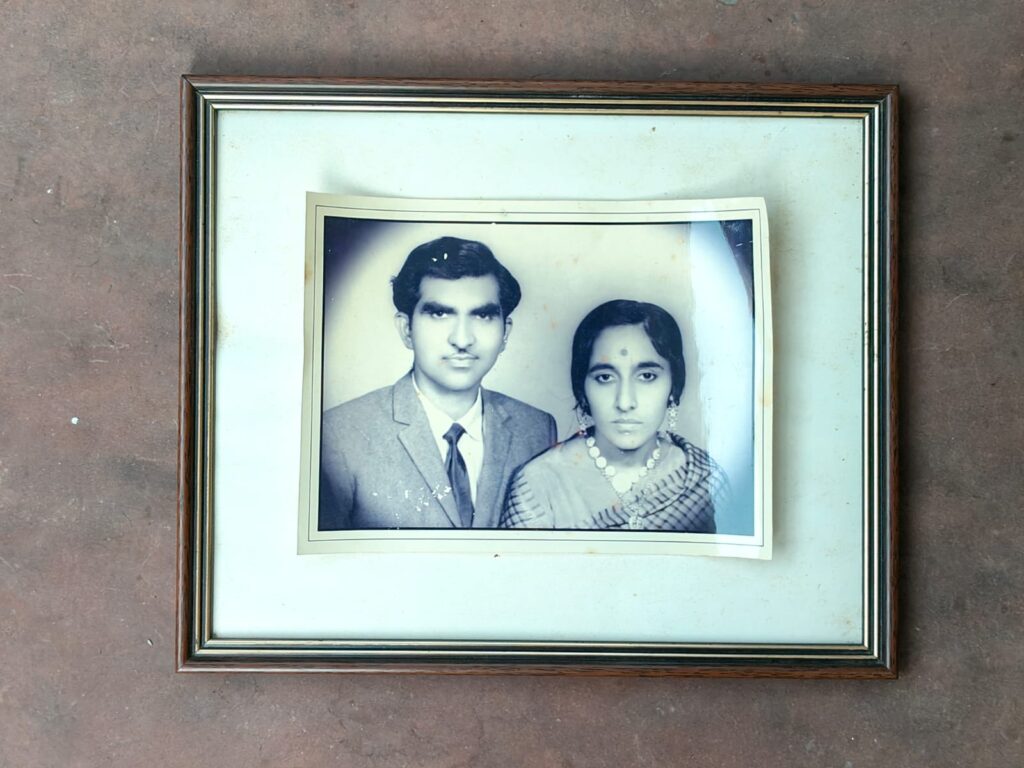
As his job advanced and transfers followed, they found a new kind of freedom. “Moving away as a married couple opened up a world of leisure,” Dadi recalled. “Every weekend we went to watch films, which was unimaginable in Jaipur with my in-laws. They believed cinema corrupted the newly married,” she added, smiling with mischief pressed behind her lips.
My grandmother always sighed when she touched the wedding card. She would caress each letter on the pale, palm-sized paper, whispering every name as if flipping through an album of memories. The inanimate card spoke to her, becoming a screen on which her life played itself out, from black-and-white to colour.
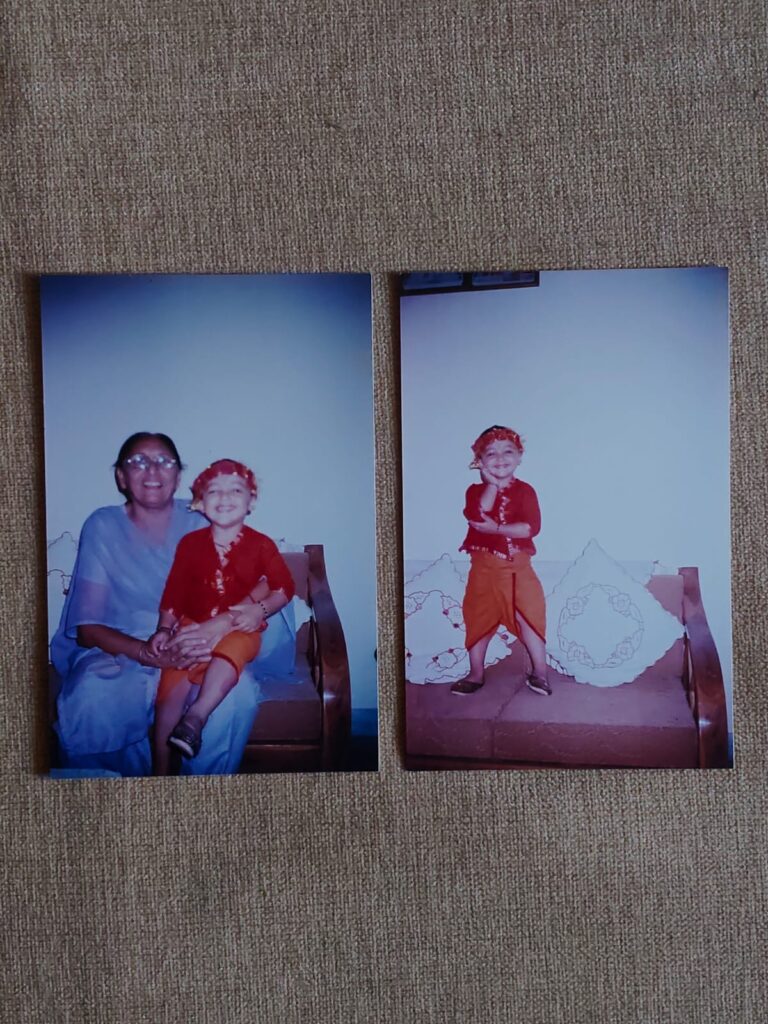

Today, these objects, the card, the tea set, the two plates, hold her traces in their quiet corners. They are the evidence of the life she lived, and the way her presence lingers in the things she once cared for. In them, her story continues gently. To remember is a rebellious act. Memory is a private country, especially when the life being remembered is punctured by blood, loss and rupture. It is a way of saying “I remember despite” — not “I remember because.”

Nostalgic
Very nice
Great work and expression of feelings and emotions
Well done and keep it up